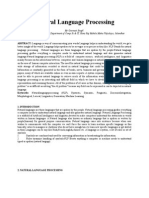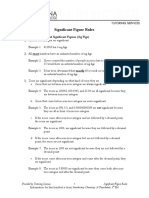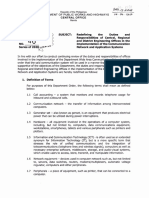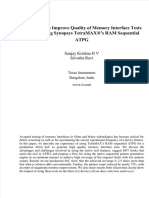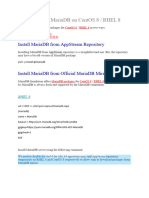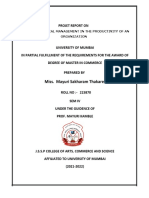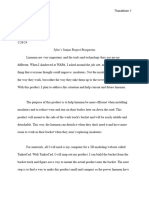0% found this document useful (0 votes)
70 views22 pagesLecture 01
The document provides an introduction to natural language processing (NLP) including:
1) Defining NLP as a subfield of computer science, artificial intelligence, and linguistics that enables computers to understand and process human language.
2) Describing the four phases in the history of NLP: machine translation, AI-influenced, grammatico-logical, and lexical/corpus-based approaches.
3) Noting the challenges in developing NLP technologies due to the unstructured nature of human language and its ambiguities.
Uploaded by
ali khanCopyright
© © All Rights Reserved
We take content rights seriously. If you suspect this is your content, claim it here.
Available Formats
Download as PDF, TXT or read online on Scribd
0% found this document useful (0 votes)
70 views22 pagesLecture 01
The document provides an introduction to natural language processing (NLP) including:
1) Defining NLP as a subfield of computer science, artificial intelligence, and linguistics that enables computers to understand and process human language.
2) Describing the four phases in the history of NLP: machine translation, AI-influenced, grammatico-logical, and lexical/corpus-based approaches.
3) Noting the challenges in developing NLP technologies due to the unstructured nature of human language and its ambiguities.
Uploaded by
ali khanCopyright
© © All Rights Reserved
We take content rights seriously. If you suspect this is your content, claim it here.
Available Formats
Download as PDF, TXT or read online on Scribd
/ 22























